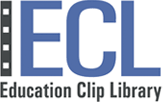How to Foster a Creative Learning Environment in the Classroom
In today's rapidly evolving educational landscape, fostering a creative learning environment has become increasingly important for educators, teachers, and education professionals. A creative classroom not only engages students but also cultivates their critical thinking skills, problem-solving abilities, and innovative mindset. In this article, we will explore practical strategies to create a supportive classroom culture, incorporate creative teaching methods, and cultivate a stimulating physical environment. By implementing these techniques, educators can inspire students to embrace their creativity and maximize their learning potential.
One effective way to enhance creativity in the classroom is by leveraging online resources, such as a memo writer online, which provides students with a convenient platform to express their thoughts and ideas. By using a memo writer online, students can develop their writing skills, brainstorm creatively, and collaborate with their peers on various projects. This digital tool empowers students to articulate their thoughts effectively and fosters a collaborative learning environment where ideas can flow freely.
Creating a Supportive Classroom Culture
To foster a creative learning environment, it is essential to establish a supportive classroom culture that encourages open-mindedness and acceptance. By embracing diversity and respecting different perspectives, students feel comfortable expressing their ideas and exploring creative solutions. Encourage a growth mindset by promoting risk-taking and emphasizing the value of learning from mistakes. Create a safe space where students feel empowered to take risks and think outside the box, knowing that their ideas are valued and appreciated.
Incorporating Creative Teaching Strategies
Incorporating creative teaching strategies is key to engaging students and fostering their creativity. Provide opportunities for student choice and autonomy, allowing them to explore topics and projects that align with their interests. Implement project-based learning and hands-on activities that encourage students to apply their knowledge and skills in real-world contexts. By incorporating these strategies, educators can spark curiosity, promote active learning, and ignite students' passion for discovery and innovation.
Cultivating a Stimulating Physical Environment
The physical environment plays a significant role in shaping the learning experience. Arrange flexible seating and learning spaces that accommodate different learning styles and preferences. Flexibility promotes collaboration, encourages movement, and allows students to work in a way that suits their individual needs. Display student work and creative resources throughout the classroom, showcasing their achievements and inspiring others. Incorporate visual aids and interactive materials that stimulate curiosity and enhance engagement.
Conclusion
Fostering a creative learning environment is a transformative approach that benefits both students and educators. By creating a supportive classroom culture, incorporating creative teaching strategies, and cultivating a stimulating physical environment, educators can unlock the full potential of their students' creativity and foster a love for learning. Remember, the journey towards a creative classroom is ongoing, and educators should continuously explore new ideas, techniques, and resources to inspire and empower their students.



